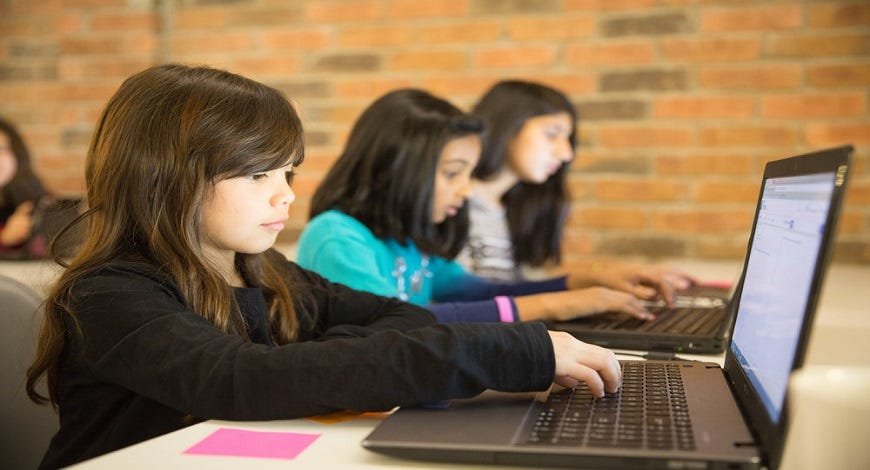Artificial intelligence (AI) is transforming various industries, and education is no exception. From personalized learning experiences to automating administrative tasks, AI is reshaping the way students and educators interact. But how can AI be used in education to enhance learning outcomes? This blog explores the various ways AI is making an impact in classrooms and beyond.
1. Personalized Learning
AI can adapt to the individual needs of students by analyzing their learning patterns. Intelligent tutoring systems use AI to assess a student’s strengths and weaknesses, providing customized study plans and feedback. This approach helps students learn at their own pace and improves comprehension.
For example, platforms like Duolingo and Khan Academy use AI to tailor lessons based on a learner’s progress. If a student struggles with a topic, AI can offer additional exercises or suggest alternative explanations to reinforce understanding.
2. Automated Grading and Feedback
Teachers spend a significant amount of time grading assignments and providing feedback. AI-powered tools can automate this process, allowing educators to focus on teaching. AI can evaluate multiple-choice tests, short answers, and even essays with high accuracy.
Grammarly, for instance, helps students refine their writing by providing instant feedback on grammar, style, and clarity. Similarly, AI-driven grading systems analyze student responses and generate insightful comments, making the assessment process faster and more efficient.
3. Virtual Assistants and Chatbots
AI-powered virtual assistants and chatbots are becoming essential tools in education. They can answer student queries, provide explanations, and offer academic support 24/7. Institutions use AI chatbots to handle common inquiries related to coursework, schedules, and assignments.
For instance, IBM’s Watson AI is used in some universities to assist students with their academic needs. Chatbots also help students with mental health support by providing resources and guidance.
4. Smart Content Creation
AI is transforming the way educational content is created and delivered. AI algorithms can generate practice tests, quizzes, and learning materials tailored to different subjects and difficulty levels.
Adaptive learning platforms, such as Coursera and Udacity, use AI to suggest relevant courses and materials based on a student’s interests and progress. AI also helps in summarizing long textbooks, making learning more efficient and engaging.
5. AI in Special Education
AI plays a crucial role in supporting students with disabilities. Assistive technologies powered by AI help students with hearing, vision, or learning impairments to access education more easily.
Speech-to-text applications like Otter.ai enable students with hearing impairments to read lectures in real time. Similarly, AI-driven text-to-speech tools assist visually impaired students by reading content aloud.
6. Enhanced Classroom Management
AI helps teachers manage classrooms more effectively by tracking student engagement and participation. Facial recognition and emotion analysis tools can identify students who are struggling or disengaged, allowing educators to provide timely support.
Moreover, AI-powered scheduling tools help schools organize timetables, track attendance, and manage resources efficiently, reducing the administrative burden on teachers.
7. Language Translation and Learning
AI-driven translation tools break language barriers in education. Students from different linguistic backgrounds can learn effectively using AI-powered translation services.
Google Translate and Microsoft Translator help students understand educational material in their native languages. AI also assists in language learning by providing real-time pronunciation and grammar corrections.
8. AI-Powered Research and Data Analysis
AI simplifies research by quickly analyzing vast amounts of data and identifying relevant information. Students and researchers can use AI-powered search engines to find academic papers, summarize content, and generate citations effortlessly.
Platforms like Semantic Scholar and Elicit use AI to filter relevant research papers, making academic work more efficient. AI also helps in detecting plagiarism and ensuring the authenticity of research work.
9. Career Guidance and Skill Development
AI assists students in career planning by analyzing their interests, strengths, and academic performance. AI-powered career counseling platforms provide personalized recommendations for courses, internships, and job opportunities.
For example, LinkedIn Learning and AI-driven resume builders help students develop relevant skills and improve their job prospects. AI can also simulate job interviews, providing students with real-world experience before entering the workforce.
10. Gamification and Interactive Learning
AI enhances learning through gamification, making education more engaging and fun. AI-driven educational games adapt to a student’s progress and provide personalized challenges.
Platforms like Prodigy and Duolingo use AI to create interactive and rewarding learning experiences. These AI-driven tools make learning feel less like a chore and more like an enjoyable activity.
The Future of AI in Education
AI continues to evolve, and its role in education will only expand. With advancements in machine learning and data analytics, AI will offer even more precise and effective educational solutions. The integration of AI in classrooms will improve student outcomes, reduce teacher workload, and make education accessible to all.
So, how can AI be used in education to its full potential? The key lies in combining AI with human expertise. While AI enhances learning, teachers remain the guiding force behind student success. The future of education will be a blend of AI-powered tools and human interaction, creating a more efficient and inclusive learning environment. You can also read what is the name of first ai robot.
